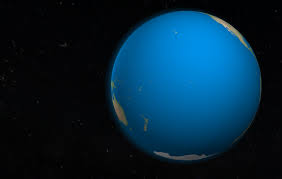The Vital Role of the Pacific Ocean in Global Ecosystems

Introduction
The Pacific Ocean, the largest and deepest ocean on Earth, plays a critical role in influencing global weather patterns, supporting biodiversity, and shaping international relations. Covering more than 63 million square miles and spanning from the Arctic in the north to the Southern Ocean in the south, its vast expanse has vital implications for climate change, economic activity, and environmental health.
Climate Influence
One of the most significant ways the Pacific Ocean affects climate is through phenomena such as El Niño and La Niña. These temperature fluctuations in the ocean’s surface water can have profound effects on global weather patterns, leading to droughts, floods, and altering monsoon seasons across various continents. Recent studies indicate that the Pacific may be warming more rapidly than other oceans, raising concerns about intensified weather extremes and their global repercussions.
Biodiversity Hotspot
The Pacific Ocean is home to an extraordinary range of marine life, from the iconic Great Barrier Reef to the extensive kelp forests along the coasts of North America. The ocean houses more than 25,000 known species, with many yet to be discovered. However, this rich biodiversity is under threat from overfishing, pollution, and climate change. The establishment of marine protected areas (MPAs) has become crucial in safeguarding these ecosystems. For instance, countries like Palau and New Zealand have taken significant steps to create protections for their marine environments, which are vital for fisheries and tourism.
Geopolitical Significance
The Pacific is not only an ecological treasure but also a focal point of geopolitical tensions. Disputes over maritime boundaries and resources, particularly in areas like the South China Sea, have made the Pacific a hotspot for international relations. Countries such as the United States, China, and various Pacific Island nations are heavily involved in discussions and conflicts surrounding trade routes, fishing rights, and strategic military positioning. The ongoing developments indicate that the emphasis on the Pacific will only grow in the coming decades.
Conclusion
As the world grapples with climate change, economic dependency, and biodiversity loss, the Pacific Ocean’s role remains pivotal. Its health and stability are vital not only for the nations bordering it but for the entire planet. As awareness of these issues rises, it becomes increasingly important for governments, scientists, and communities to collaborate on sustainable practices that protect this invaluable resource. The future of the Pacific Ocean impacts us all, making its preservation a global responsibility.
You may also like

The Fascinating World of Eagles

Neil Foden: Champion of Sustainable Practices
